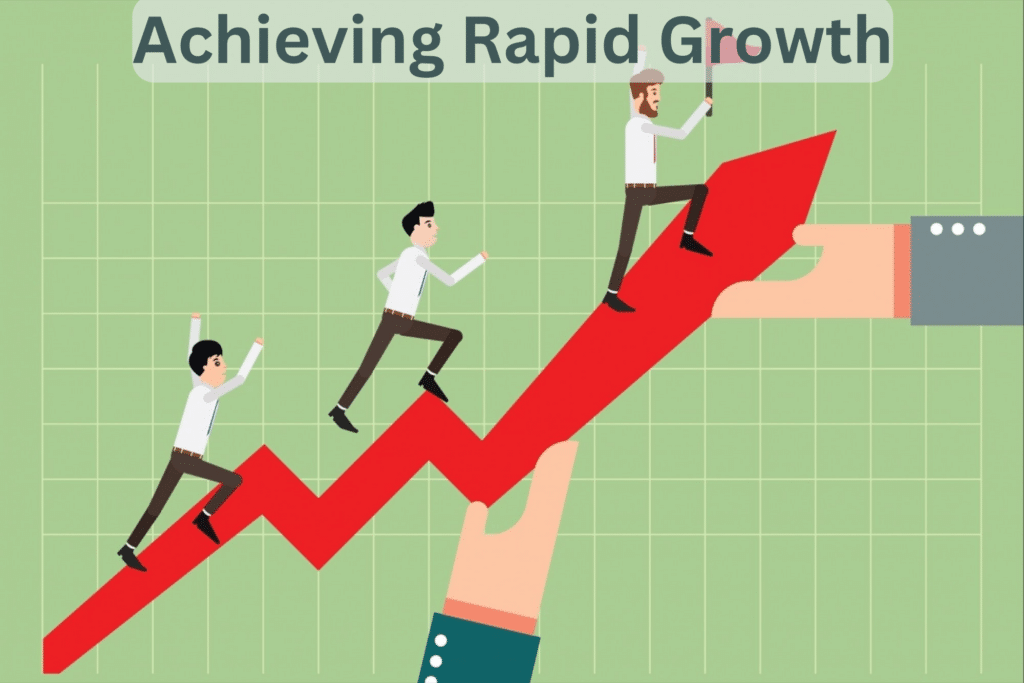Small businesses play a pivotal role in economies around the world, driving employment, fostering innovation, and contributing to overall economic growth. However, the path to building a successful small business is not without challenges. It is a journey defined by distinct stages of growth, each requiring unique strategies and priorities.
This guide outlines the five key stages of small business growth, offering insights to help entrepreneurs navigate each phase effectively.
Stage 1: Existence – The Foundation Phase

The existence stage is where every business journey begins. Entrepreneurs focus on turning their ideas into reality and establishing a foothold in the market.
Key Characteristics
- Developing and launching the product or service.
- Identifying and targeting initial customers.
- Managing limited resources with a strong emphasis on cash flow.
- Operating under high levels of uncertainty and risk.
Challenges
- Proving the business concept and its market viability.
- Attracting the first set of customers and generating revenue.
- Balancing operational expenses against limited cash flow.
- Overcoming unexpected hurdles, such as market rejection or supply chain issues.
Strategies for Success
- Market Research: Gain deep insights into customer needs, competition, and industry trends to validate your idea.
- Lean Operations: Focus on minimizing costs and ensuring value delivery to customers.
- Customer Engagement: Build meaningful relationships with early customers to gather feedback and establish trust.
- Resource Management: Make efficient use of funds, time, and manpower to sustain the business through its early days.
Stage 2: Survival – Establishing Stability

Once the business gains traction, it enters the survival stage, where the primary goal is to stabilize operations and maintain profitability.
Key Characteristics
- Generating consistent revenue streams.
- Establishing basic operational processes and routines.
- Managing a small team of employees, if applicable.
Challenges
- Balancing expenses with revenue to maintain cash flow.
- Retaining early customers while attracting new ones.
- Managing time and resources effectively as the business grows.
- Preparing for unexpected economic or market changes.
Strategies for Success
- Cash Flow Management: Monitor income and expenses closely to ensure financial stability.
- Customer Retention: Focus on providing excellent service to build loyalty.
- Scalability Planning: Evaluate operations for opportunities to scale.
- Data-Driven Decisions: Use analytics to assess performance and identify areas for improvement.
Stage 3: Success – Scaling and Expanding

The success stage is marked by steady growth, profitability, and the potential for expansion. At this point, business owners decide whether to consolidate operations or pursue aggressive growth.
Key Characteristics
- Established market presence and customer base.
- Consistent cash flow and profitability.
- Opportunities for geographic, product, or service expansion.
Challenges
- Managing growth without compromising quality.
- Hiring and retaining skilled employees as the team expands.
- Adapting to increased operational complexity.
- Keeping up with evolving market demands and competition.
Strategies for Success
- Build a Strong Team: Hire professionals who align with your vision and values.
- Invest in Technology: Automate repetitive tasks to improve efficiency.
- Diversify Offerings: Explore complementary products or services to expand revenue streams.
- Expand Market Reach: Leverage online platforms, partnerships, or new locations to reach more customers.
Stage 4: Takeoff – Achieving Rapid Growth

The takeoff stage involves rapid growth and scaling. Businesses at this stage often pursue significant investments to fuel expansion and capture larger market shares.
Key Characteristics
- Increased revenue and customer base.
- Strategic partnerships and collaborations.
- Focus on branding and market leadership.
Challenges
- Maintaining operational efficiency during rapid growth.
- Managing higher risks associated with investments and scaling.
- Keeping the organizational culture intact while expanding the team.
- Staying agile to respond to market trends and competition.
Strategies for Success
- Streamline Operations: Focus on efficient processes to handle increased demand.
- Financial Planning: Secure funding and maintain healthy financial reserves.
- Leadership Development: Empower team members to take ownership of critical responsibilities.
Stage 5: Maturity – Long-Term Sustainability

The focus shifts to maintaining growth and staying competitive in a dynamic market.
Key Characteristics
- Strong market position and brand recognition.
- Established operational and management structures.
- Diversified revenue streams.
Challenges
- Staying innovative and avoiding stagnation.
- Addressing new competitors or disruptive technologies.
- Managing the complexities of a large organization.
- Ensuring long-term customer loyalty.
Strategies for Success
- Continuous Innovation: Invest in R&D to stay ahead of the curve.
- Customer-Centric Approach: Keep refining offerings based on customer feedback.
- Global Expansion: Explore international markets to tap into new opportunities.
- Sustainability Initiatives: Incorporate eco-friendly practices to appeal to conscious consumers and reduce costs.
Common Pitfalls to Avoid in Business Growth
- Ignoring Cash Flow: Even profitable businesses can fail if cash flow is not managed effectively.
- Underestimating Competition: Failing to monitor market trends can lead to loss of relevance.
- Overexpansion: Expanding too quickly without sufficient planning can strain resources.
- Lack of Delegation: Micromanaging can hinder productivity and innovation within the team.


